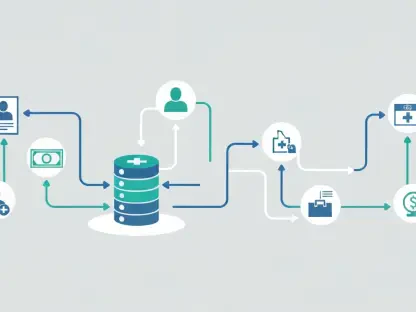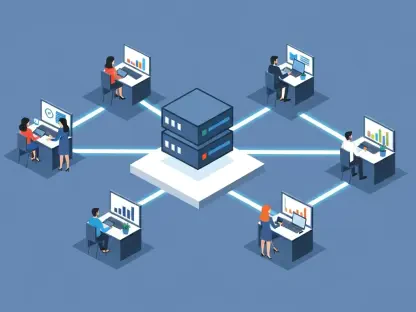Introducing Vijay Raina, our expert in enterprise SaaS technology and software design architecture. With a wealth of experience and thought leadership in shaping software design and accessibility, Vijay’s reflections offer invaluable insights into building accessibility cultures in large organizations.
Can you describe your role and experience as an accessibility engineer?
My primary role involves ensuring that software products are accessible to everyone, including people with disabilities. This typically involves collaborating with design and development teams to integrate accessibility features into the product lifecycle. My journey has been rich with experiences, ranging from conducting accessibility audits to mentoring teams on best practices.
How did you feel when you learned that your role was at risk of redundancy?
It was a moment of mixed emotions for me. On one hand, I felt deep sadness and self-doubt about my efforts and contributions. On the other hand, it became an opportunity to reflect on my journey and assess the impact I had made.
What steps did you take to reflect on your accessibility journey during that tough period?
Reflection became my productive line of thought. I considered what I had achieved, areas for improvement, and key learnings. This period of introspection helped me understand the significance of efforts in fostering an accessibility culture in my organization.
What insights did you gain from your reflection?
One major insight was the importance of gradual but consistent efforts in shaping organizational culture. It was clear to me that building a robust accessibility program involves embedding accessibility into daily habits and processes within teams.
How did the concept of habits and culture from “Atomic Habits” by James Clear resonate with your accessibility work?
The idea of small, consistent habits aligning with the larger cultural shifts deeply resonated with my work. Accessibility should not be seen as an external requirement but should be naturally integrated into every phase of product development through habitual practices.
What role did small, consistent habits play in fostering an accessibility culture in your organization?
These small habits, like regular accessibility checks during development, cultivating a culture where accessibility was second nature. Over time, these habits contributed significantly to embedding accessibility seamlessly into our workflows and processes.
What is the difference between focusing on goals vs. systems in the context of accessibility?
Goals set a direction, but systems, the processes we adhere to daily, ensure progress. In accessibility, focusing on compliance alone can provide temporary results. It’s the systems that drive continuous, sustainable improvement by integrating accessibility into the core of development processes.
Can you provide an example of how focusing on systems can create lasting progress in accessibility?
Absolutely. In one project, instead of targeting compliance as a goal, we redesigned our entire development workflow to include accessibility checkpoints at every stage. This shift in the system ensured accessibility was maintained consistently, reducing the chance of issues resurfacing as the product evolved.
Why is the idea of building habits important for achieving sustainable accessibility practices?
Habits are crucial because they establish consistent actions that become ingrained in the team’s daily routines. This ongoing practice ensures that accessibility is continuously addressed, making it a natural part of the workflow rather than a last-minute consideration.
What should be the ultimate goal of an organization when it comes to accessibility?
The ultimate goal should be to create a user-centric culture where accessibility is embedded in every decision, workflow, and process. It’s about delivering meaningful, inclusive experiences to all users rather than just meeting compliance standards.
How can companies shift their focus from mere compliance to embedding accessibility in every aspect of their workflow?
Companies can begin by integrating accessibility into their design systems and development processes from the start. Regular training, real user testing, and cultivating awareness that accessibility benefits everyone can help embed these practices deeply.
How do different companies’ sizes, structures, and cultures influence their approach to accessibility?
Larger companies might have more resources but face challenges in coordination across teams. Smaller companies might find it easier to implement changes but struggle with resource constraints. Each organization must tailor its approach based on its unique structure and cultural context.
What are some resource allocation strategies for companies working on accessibility with limited resources?
Prioritize early-stage involvement, partner with existing teams like design systems for scalability, and focus on impactful areas such as critical components and common issues. Leveraging automation for routine checks can also help stretch limited resources effectively.
How can partnering with the design system team benefit accessibility efforts?
Partnering with the design system team can be one of the most effective strategies. Fixing a single component can improve accessibility across all instances where it’s used, scaling the impact significantly and ensuring consistent practices.
Can you provide examples of foundational decisions in design that impact accessibility?
Choosing color palettes with adequate contrast, designing interfaces with screen reader compatibility, and ensuring interactive elements are accessible are foundational decisions. These choices impact accessibility deeply and should be made early in the design process.
What are some effective ways to create allies and build a network for promoting accessibility within an organization?
Creating allies can be as simple as starting a Slack channel for accessibility discussions, organizing lunch-and-learns, or establishing a formal champions network. Celebrating wins and recognizing contributions also fosters a supportive environment.
Why is education important for scaling accessibility efforts within an organization?
Education is key to ensuring everyone understands the basics of accessibility. It prevents repeated mistakes and integrates accessibility into the organization’s culture. Regular training sessions can make accessibility knowledge widespread and consistent.
What types of training or education programs do you recommend for different roles (PMs, designers, engineers)?
I recommend tailored training programs for each role. PMs should understand the business impact and legal requirements, designers should focus on inclusive design practices, and engineers should learn about accessible coding practices and testing methods.
Can you share your experience with onboarding sessions for designers at Spotify and their impact on accessibility?
At Spotify, onboarding sessions for designers were transformative. Most issues originate at the design stage, and training designers early ensured accessibility was considered from the outset. This proactive approach led to fewer accessibility challenges down the line.
What are the benefits and limitations of automating accessibility checks?
Automation is beneficial for catching basic issues early and maintaining consistency, particularly in large organizations. However, it has limitations and cannot replace the need for intentional design and manual user testing to ensure comprehensive accessibility.
How can automation serve as a useful tool without replacing intentional accessibility practices?
Automation should act as a safety net, catching regressions and reminding teams of accessibility considerations. Coupled with manual reviews and real user testing, it ensures that accessibility remains thorough and intentional rather than just a compliance checkbox.
What role does manual testing and user testing play in ensuring accessible experiences?
Manual testing and user testing are essential for capturing nuances that automated tools might miss, such as the specific needs of different user groups. Real user feedback ensures that accessibility solutions are practical and effective in real-world scenarios.
How did you transition from fixing accessibility issues yourself to supporting teams more strategically?
I moved from hands-on fixing to a more strategic role by becoming a mentor, providing guidelines, and partnering with teams for pair programming and code reviews. This shift allowed me to impact more areas and foster a culture where accessibility is a team responsibility.
What are some effective ways to provide support for complex accessibility issues within a larger organization?
Providing support can involve detailed documentation, holding office hours for consultations, and running regular training sessions. Pair programming and code reviews also help address complex issues collaboratively, ensuring they are tackled thoroughly.
When is the best time to use accessibility audits, and what are their limitations?
Audits are best used as validation steps after teams have implemented initial accessibility measures. They can identify overlooked issues but should not be the starting point. Regular audits ensure ongoing compliance and help refine processes.
What should teams focus on before requesting an audit to ensure better outcomes?
Teams should focus on embedding accessibility early in development, conducting thorough manual testing, and using automated tools for initial checks. Addressing basic issues upfront makes audits more effective and ensures fewer significant problems are found.
How should accessibility metrics be collected and used to improve products?
Metrics should be collected through automated tools, user feedback, and manual testing results. These data points help identify trends, measure progress, and find areas for improvement, guiding ongoing accessibility efforts effectively.
In what ways can user research and testing contribute to better accessibility?
User research and testing provide invaluable insights as they reflect real-world usage and needs. Testing with diverse users helps uncover barriers and ensures that solutions address genuine accessibility challenges effectively.
What other initiatives can organizations pursue to support accessibility beyond product development?
Beyond product development, organizations can focus on improving hiring practices, ensuring workplace platforms are accessible, and fostering an inclusive culture. This holistic approach ensures accessibility is considered in all aspects of the business.
Do you have any advice for our readers?
My advice would be to start small and focus on making incremental changes. Build a network of allies, educate everyone on the basics, and integrate accessibility into everyday practices. Be persistent and resilient; every small effort counts toward creating a more inclusive environment.









